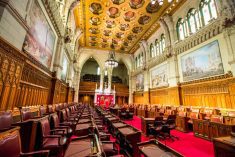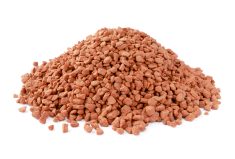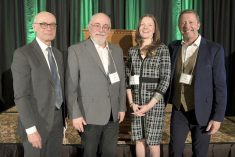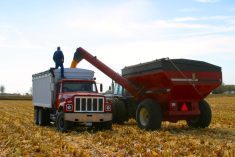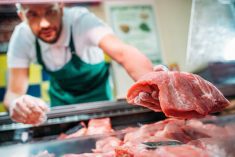In scientific and conservation terminology, “ecosystem services” refer to the benefits that wetlands, diverse plant and animal life and wild spaces provide to society.
For Indigenous peoples, those things are gifts, the audience was told during the Sustainability of Canadian Agriculture Conference in mid-March.
The virtual conference was co-hosted March 12-14 by the University of Manitoba’s National Centre for Livestock and the Environment and Agriculture and Agri-Food Canada.
Read Also

Seeding Indigenous agricultural prosperity
National Circle for Indigenous Agriculture and Food says Indigenous agricultural success needs strong relationships.
Why it matters: Indigenous perspectives on agriculture view the natural world as a partner and teacher.
Society over the last few centuries has tested the hypothesis of “what if we behaved as if the Earth was nothing more than stuff … and, moreover, that all the stuff belonged to us,” said Robin Wall Kimmerer.
“The results of that experiment are in, and we find ourselves teetering on the edge of a precipice of climate chaos.”
Wall Kimmerer is a professor at SUNY College of Environmental Science and Forestry in Syracuse, New York, and director of the Center for Native Peoples and the Environment. She’s a member of the Citizen Potawatomi Nation in Oklahoma.
She challenged the audience to a change of worldview; to characterize humans as members of a “democracy of species, governed by laws of interdependence.”
As an example, Indigenous peoples have traditionally viewed plants as teachers. Modern ideas like regenerative agriculture are only starting to realize some of those lessons.
In 2007, business magnate Richard Branson put up a $25 million reward for a demonstrated method of drawing carbon out of the atmosphere and storing it. Wall Kimmerer noted that plants have always done this, using photosynthesis and storing carbon for centuries in forests, peat bogs and the Prairies.
They will even grow faster if there is more carbon in the atmosphere, she said, as long as they have water and nutrients to support the process.
However, too many forests have been cut down and too much carbon has been released into the atmosphere for the plants to do it themselves, she said, so “it’s time to imagine and implement a new green economy for the future.”
For agriculture, that future looks a lot like permaculture.
Rebuilding
Some Indigenous communities are rebuilding their relationships with the land, said Melissa Arcand.
She is a soil biogeochemist and professor at the University of Saskatchewan who teaches in the Kanawayihetaytan Askiy program, which trains students to work in resource and land management in Indigenous communities. Arcand is a member of the Muskeg Lake Cree Nation.

In the inaugural Ted Poyser Lecture in Soil Health, Arcand tied soil science on the Prairies to its historic context.
The first data on Prairie soil nitrogen and organic matter was published in 1882 and 1883, Arcand said. This was within years of the near-extinction of the buffalo, the Metis Red River Resistance, the signing of Treaty 1, Treaty 2 and the Indian Act and the introduction of the Peasant Farm Policy, which put limits on the scope of Indigenous agriculture.
These events allowed settlers to begin farming the Prairies, but relegated Indigenous peoples to small reservations. Much of the subsequent Indigenous land was sub-prime farmland, Arcand said, and some of the better land was later expropriated to be used for settler farming.
Meanwhile, policies restricted the ability of First Nations farmers to sell their own agricultural products.
Today, Arcand said, many First Nations are acquiring land, though much of the agricultural land left to them is leased to non-Indigenous farmers. People within Indiginous communities have, in some cases, lost their relationship with the land and don’t know who’s farming it.
Most land use decisions are then made by the operating farmer, who might not have incentive to use best management practices because of short lease terms, she said.
The Kanawayihetaytan Askiy certificate program (Kanawayihetaytan Askiy translates to “let us take care of the land) covers courses in law, business and economics. Arcand then teaches natural science through a hands-on, land-based learning course. Students are taken to Indigenous communities where they undertake Western science practices like soil classification, while at the same time being guided by local elders and knowledge keepers.
Arcand also spoke about Bridge to Land Water Sky, an AAFC Living Lab project led by communities such as Mistawasis Nehiyawak and Muskeg Lake Cree Nation.
The goal of that program is to reimagine the relationship between Indigenous landowners and farmers while improving land management, food security and sovereignty.
A lot of the work has involved moving away from a strictly transactional relationship with the farmers who rent the land, Arcand said. This allows the farmer to understand the First Nations’s goals, and for the community to understand the constraints that guide farmers’ decision-making on the land.
“It’s a lot of, sort of back-and-forth learning,” Arcand said.
Like Wall Kimmerer, Arcand emphasized respect for the kinship between the natural world and humanity.
“We think of the earth, the birds, the fish, the plants — those are our relatives, and when you start to think of them as your relatives, you’re going to treat them differently,” Arcand said.
“If we’re really in a reciprocal relationship … in turn, our relationship is to protect them just as much because we rely on them.”




